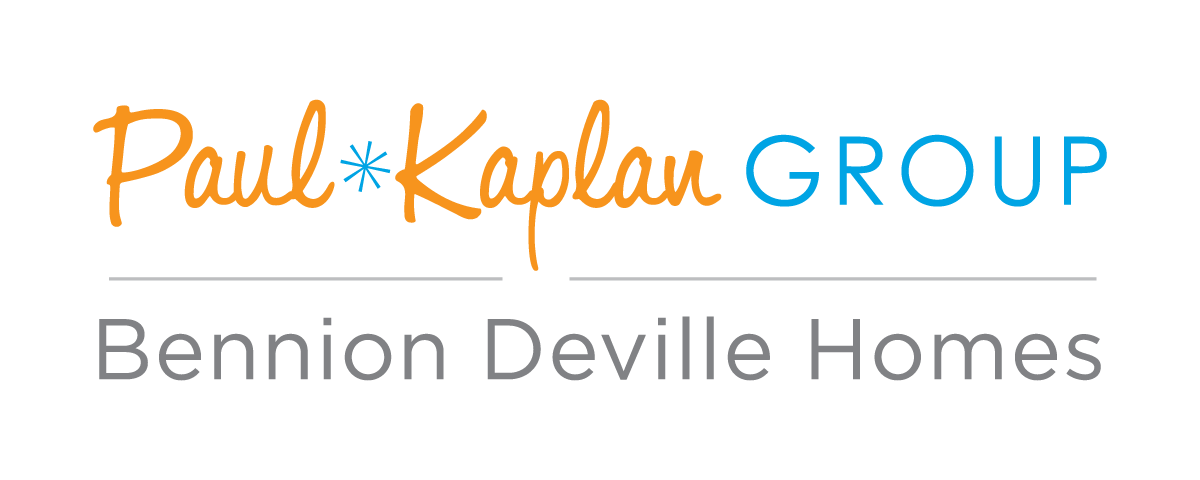Palm Springs Mobile Home History
Manufactured homes, often referred to as mobile homes, have a unique and storied history in Palm Springs, California. Their journey from utilitarian dwellings to symbols of mid-century modern living reflects broader trends in American society and the distinctive cultural fabric of Palm Springs.
Origins and Early Adoption
The concept of mobile homes can be traced back to the early 20th century when they were initially developed as trailers for temporary or seasonal accommodation. In Palm Springs, these homes gained traction during the 1930s and 1940s. The city's burgeoning reputation as a desert oasis and a retreat for Hollywood celebrities created a demand for affordable, flexible housing options. Mobile homes offered an ideal solution, providing a quick and cost-effective way to enjoy the desert lifestyle without the permanence of traditional home construction.
The Mid-Century Boom

The mid-20th century marked a significant turning point for mobile homes in Palm Springs. During the 1950s and 1960s, the popularity of these homes soared, driven by several factors:
Affordability and Accessibility: Manufactured homes were an affordable alternative to conventional housing, making them accessible to a broader demographic. This was particularly appealing in Palm Springs, where the cost of traditional homes was rising due to increasing demand.
Modern Design Aesthetics: The post-World War II era ushered in a wave of modernist architecture, characterized by clean lines, open spaces, and a seamless integration with the surrounding environment. Palm Springs became a hub for this architectural movement, and manufactured homes were no exception. Designers began creating stylish, modern mobile homes that embodied the mid-century modern aesthetic, making them highly desirable.
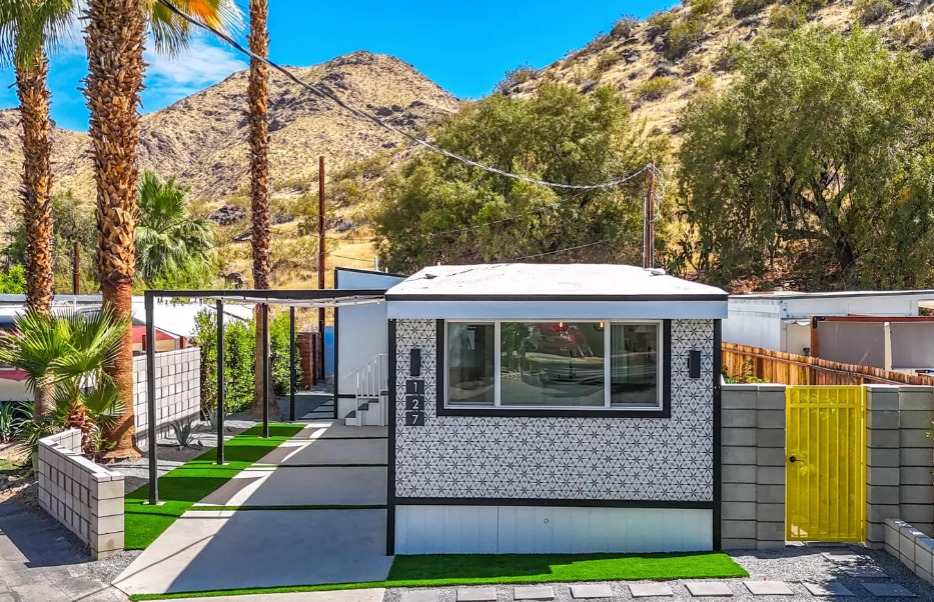
Celebrity Influence: Palm Springs was a favorite getaway for Hollywood stars and other celebrities. Many of them chose mobile homes for their convenience and style, further popularizing this form of housing. The glamorous association with high-profile individuals helped elevate the status of manufactured homes.
Community Living: Mobile home parks, which provided a sense of community and shared amenities, became increasingly popular. These parks offered residents a resort-like living experience with swimming pools, clubhouses, and well-maintained landscapes. This community-centric approach resonated with many who were seeking both affordability and a high quality of life.
Bing Crosby's Blue Skies Trailer Park
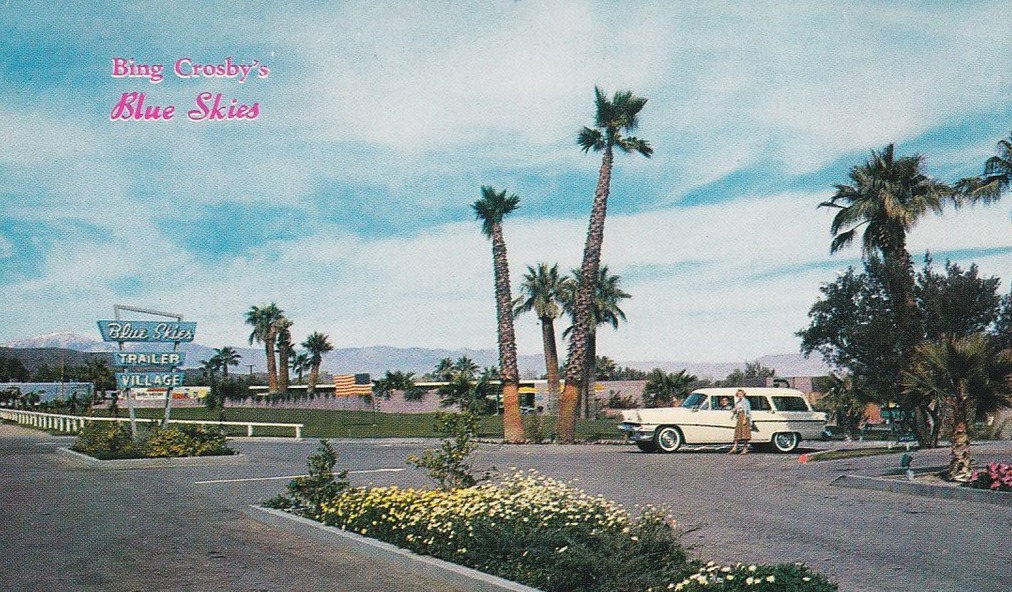
A notable chapter in the history of mobile homes in the Palm Springs area is the establishment of Bing Crosby's Blue Skies Trailer Park in Rancho Mirage. In the early 1950s, the legendary crooner and actor Bing Crosby developed this park as a luxurious yet affordable community for mobile home living. Located just a short drive from Palm Springs, Blue Skies Trailer Park was designed to offer a high-end lifestyle in a relaxed, community-oriented setting.
Crosby's vision was to create a retreat where residents could enjoy the beauty of the desert and the camaraderie of their neighbors. The park featured well-manicured grounds, a clubhouse, and recreational facilities, setting a new standard for mobile home parks. It quickly became a sought-after destination, attracting a mix of retirees, vacationers, and even other celebrities. Blue Skies Trailer Park played a pivotal role in demonstrating that mobile home living could be both stylish and desirable, further cementing the popularity of manufactured homes in the region.
Palm Canyon Mobile Club Renovation
A more recent highlight in the evolution of manufactured homes in Palm Springs is the renovation of the Palm Canyon Mobile Club. Once a run-down 1960s mobile home park that resembled a "war zone" with scattered older mobile homes and half-empty lots, it has undergone a remarkable transformation thanks to the collaborative efforts of the developer and Paul Kaplan of The Paul Kaplan Group.

Paul Kaplan, leveraging his architectural training, worked with a local manufactured home builder to design modern-day versions of the classic mid-century mobile homes. These new homes, which incorporate references to mid-century design and style, sold in record time, underscoring their appeal.
In addition to upgrading the homes, the developer made significant improvements to the park's infrastructure. The clubhouse was remodeled, a dog park was added, the shuffleboard courts, pool, and spa were renovated, and a gym was installed. These enhancements have revitalized the park, making it a desirable living community once again.
Even more impressive is the strong sense of community that has developed within the Palm Canyon Mobile Club. Paul Kaplan's designs include front porches and outdoor spaces that encourage social interaction among residents. Carports are intentionally placed on the opposite sides of the entrances, prompting residents to walk around the front of the house to reach their front doors, thereby increasing opportunities for neighborly encounters and fostering a community atmosphere.
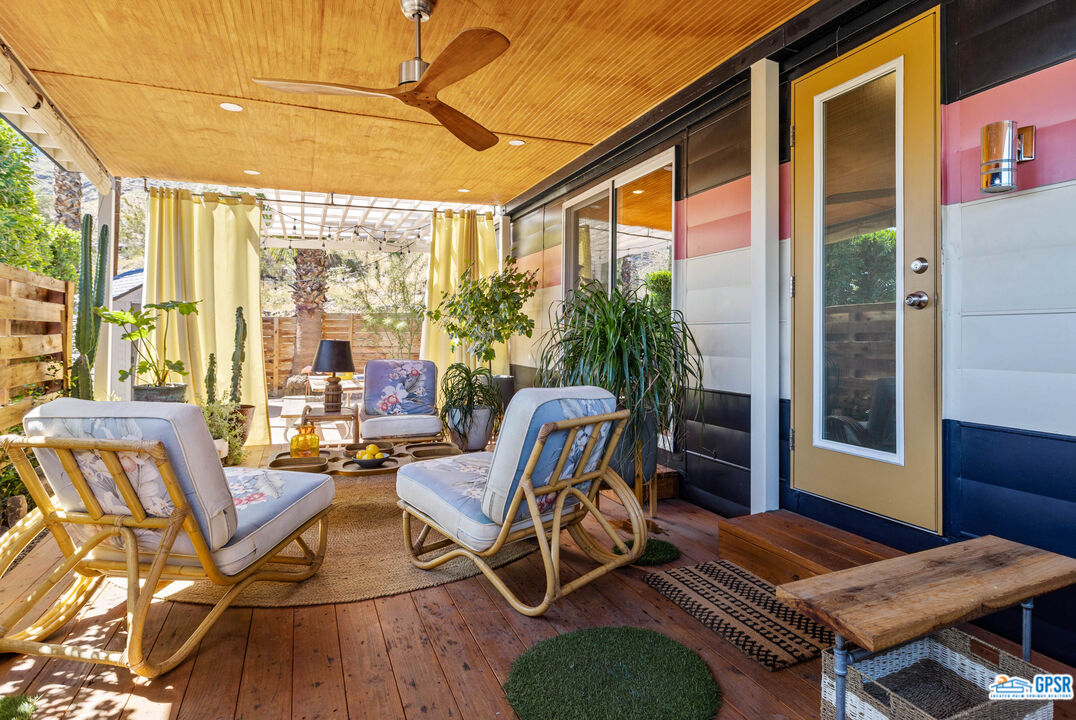
Market Trends and Pricing
The stereotype that manufactured homes do not increase in value is being challenged in Palm Springs. Over the last five years, the market for mobile homes has shown significant appreciation. For instance, the median sale price for manufactured homes has increased, with many properties appreciating at rates comparable to traditional homes.
In 2024, the median price per square foot for manufactured homes in Palm Springs was approximately $424, compared to $483 for traditional homes (Movoto Real Estate) (Redfin). This indicates that while manufactured homes are generally more affordable, they have also seen substantial value increases. The Palm Canyon Mobile Club homes, after their renovation, sold rapidly, demonstrating robust demand and price growth.
Comparatively, traditional single-family homes have also appreciated, but the growth rate for manufactured homes, especially in well-managed and upgraded parks, has been impressive. This trend highlights the evolving perception and investment potential of manufactured homes in the Palm Springs area.
Conclusion
The history of manufactured homes in Palm Springs is a testament to their adaptability and enduring appeal. From their early days as practical accommodations to their mid-century boom driven by affordability, modern design, and celebrity influence, these homes have carved out a significant place in the city's housing landscape. The contribution of developments like Bing Crosby's Blue Skies Trailer Park and the recent renovation of the Palm Canyon Mobile Club further highlight the innovative spirit that has long defined this housing option. Today, manufactured homes continue to offer a compelling blend of style, convenience, and community, making them a beloved choice for many seeking to enjoy the iconic Palm Springs lifestyle.
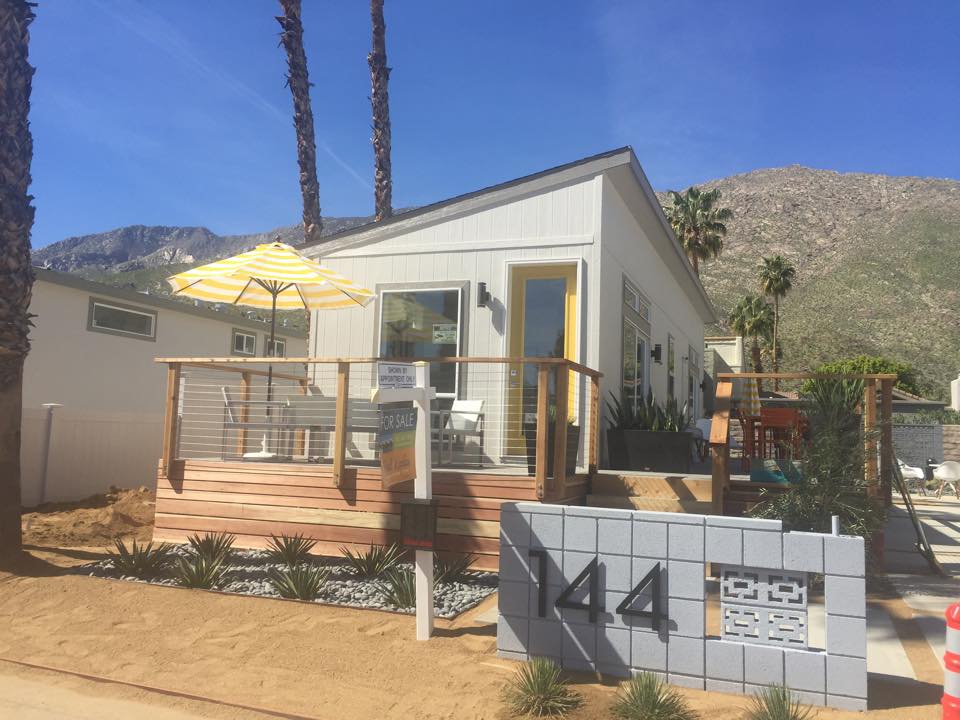
Below is a list of examples of Manufactured homes currently on the market represented by The Paul Kaplan Group.
Click here to view current manufactured homes available for sale.
Selling Your Home?
Get your home's value - our custom reports include accurate and up to date information.

